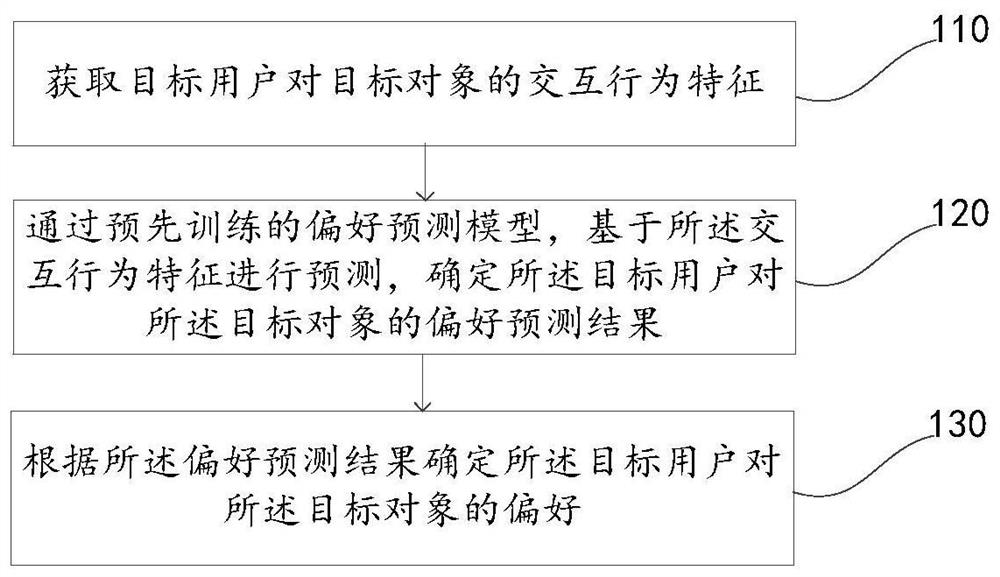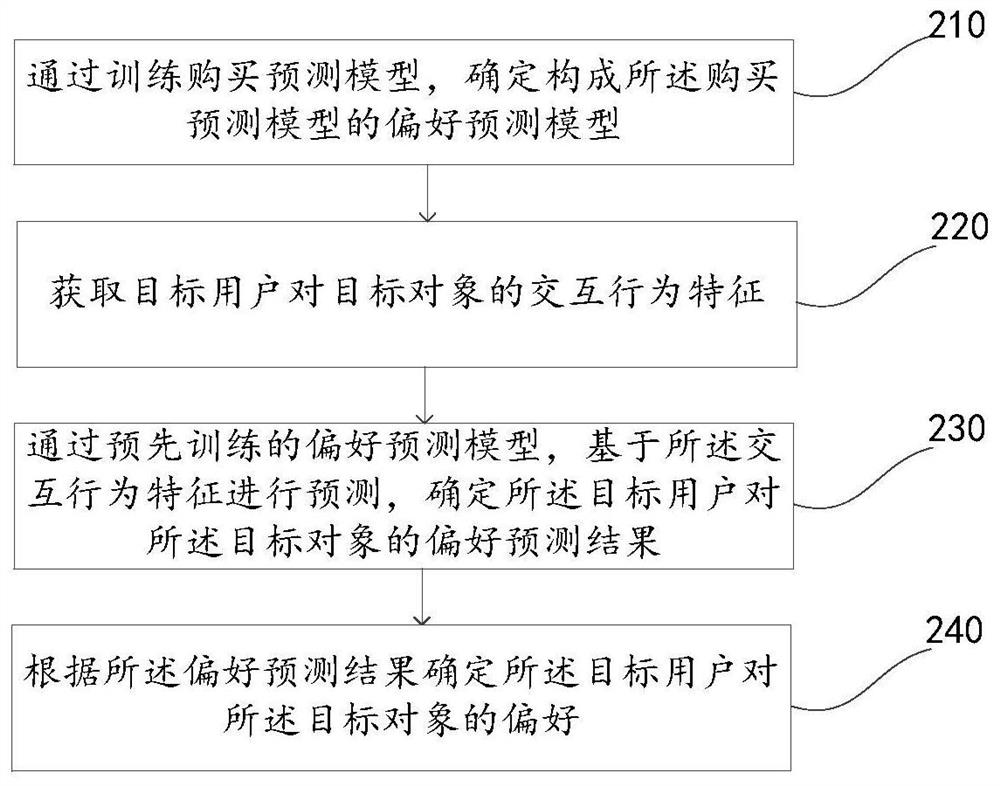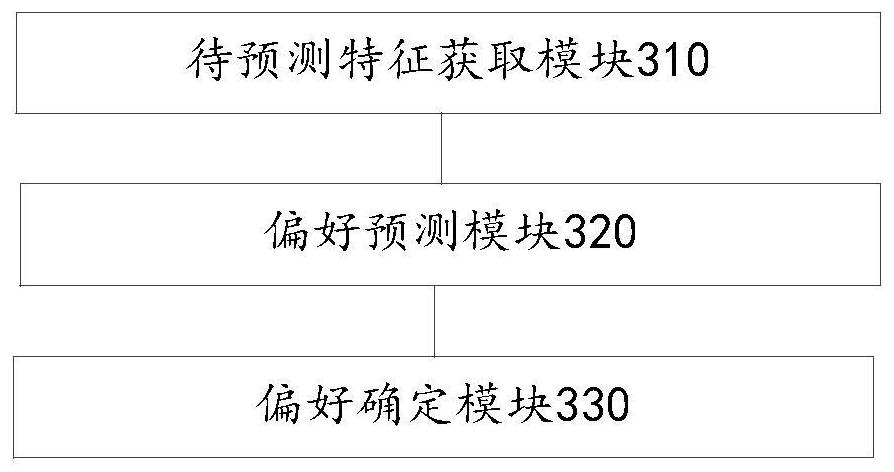A user preference prediction method and device, electronic equipment
A prediction method and user technology, which is applied in the computer field, can solve problems such as limited scope of use, inaccurate prediction results, and inability to predict preferences for unknown objects, so as to achieve accurate prediction results
- Summary
- Abstract
- Description
- Claims
- Application Information
AI Technical Summary
Problems solved by technology
Method used
Image
Examples
Embodiment 1
[0025] A method for predicting user preferences disclosed in this embodiment, such as figure 1 As shown, the method includes: Step 110 to Step 130.
[0026] Step 110, acquiring the characteristics of the target user's interaction behavior with the target object.
[0027] During specific implementation, the target user's interactive behavior characteristics on the target object may include any one or more items of the number of times the target user purchases, clicks, browses, and favorites the target object. Taking the prediction of user u's preference for product I as an example, first, according to the user's historical behavior data stored on the platform or the entire network, determine the number of purchases, clicks, browsing times, and favorites of user u for product I within a period of time, as Interaction behavior characteristics of different dimensions.
[0028] Step 120, using a pre-trained preference prediction model to make predictions based on the interaction ...
Embodiment 2
[0034] Such as figure 2 As shown, a user preference prediction method disclosed in another embodiment of the present application includes: Step 210 to Step 240 .
[0035] Step 210: Determine a preference prediction model constituting the purchase prediction model by training the purchase prediction model.
[0036] Wherein, the purchase prediction model is obtained by superimposing the preference prediction model, the user factor model and the object factor model, and performing a sigmoid operation; the preference prediction model is used to fit the user's preference for the object; the user factor model is used to simulate The potential non-intuitive factors of the user's own shopping; the object factor model is used to fit the popularity of the object. Wherein, the training data used for training the purchase prediction model at least includes: basic user characteristics, basic object characteristics, and user interaction behavior characteristics for objects.
[0037] Befo...
Embodiment 3
[0061] A user preference prediction device disclosed in this embodiment, such as image 3 As shown, the device includes:
[0062] The feature acquisition module 310 to be predicted is used to acquire the interaction behavior characteristics of the target user to the target object;
[0063] A preference prediction module 320, configured to use a pre-trained preference prediction model to make predictions based on the characteristics of the interaction behavior, and determine the prediction result of the target user's preference for the target object;
[0064] A preference determination module 330, configured to determine the target user's preference for the target object according to the preference prediction result.
[0065] Optionally, the preference determination module 330 is further configured to determine that the target user does not prefer the target object if the score corresponding to the preference prediction result is negative; if the score corresponding...
PUM
 Login to View More
Login to View More Abstract
Description
Claims
Application Information
 Login to View More
Login to View More - Generate Ideas
- Intellectual Property
- Life Sciences
- Materials
- Tech Scout
- Unparalleled Data Quality
- Higher Quality Content
- 60% Fewer Hallucinations
Browse by: Latest US Patents, China's latest patents, Technical Efficacy Thesaurus, Application Domain, Technology Topic, Popular Technical Reports.
© 2025 PatSnap. All rights reserved.Legal|Privacy policy|Modern Slavery Act Transparency Statement|Sitemap|About US| Contact US: help@patsnap.com



